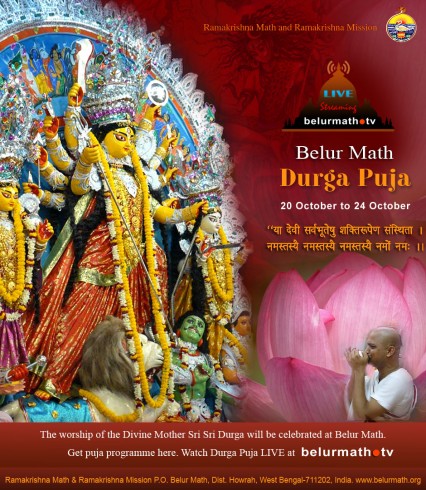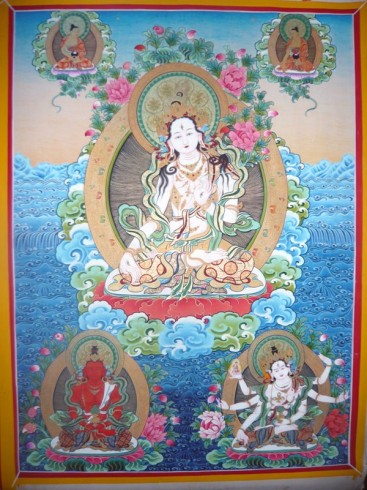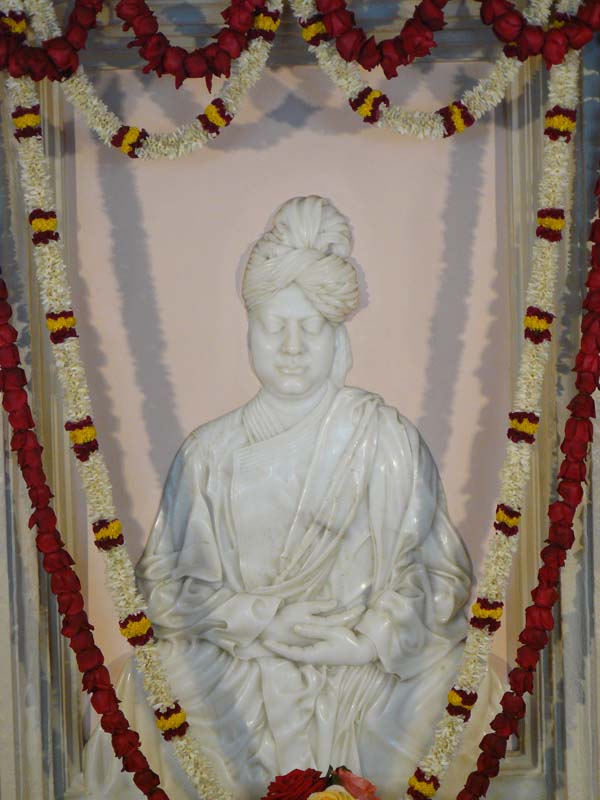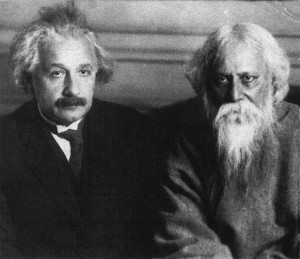Search results for vedanta (86)
Must read: UK Supreme Court judgment on #Vendanta v Lungowe
Timely and fascinating online seminar on #UK Supreme Court’s recent Vedanta decision allowing a parent corporation to be sued for responsibility for a subsidiary’s harm to human rights and environment in another country@BizHumanRights@IPietropaoli@ProfSuryaDeva@saliltripathihttps://t.co/hteDZEMGTb
— Sam Zarifi (@SZarifi) 17. April 2019
Great introduction to Vedanta online symposium by @CarlosLopezGVAhttps://t.co/SVXK8hLPHe
— Robert McCorquodale (@InclusiveLaw) 17. April 2019
Take action to free Wa Lone, Kyaw Soe Oo and all Burma’s political prisoners here: https://t.co/XO4kp30BeA
— Burma Campaign UK (@burmacampaignuk) 17. April 2019
#Myanmar President says 9,535 local prisoners & 16 foreigners, have been pardoned.
2 @Reuters journalists -who won a Pulitzer Prize for revealing the army’s execution of #Rohingya Muslim men- were not among those pardoned & released.#FreeWaLoneKyawSoeOohttps://t.co/ynWclrRLG5
— Lotte Leicht (@LotteLeicht1) 17. April 2019
About time that we all send an email to Volkswagen China with relevant links on the Xinjiang camps. Maybe start a petition. Volkswagen has consistently chosen profit over ethics in the past few years. https://t.co/cE21lyX3Ik
— Adrian Zenz (@adrianzenz) 17. April 2019
#Tourism figures in #Turkey in 2018#Russia#Germany#Bulgaria#UnitedKingdom#Georgia
Tourism Week 15-22 April 2019#touristhttps://t.co/jA40IsiAT6— Burak Sansal (@allaboutturkey) 16. April 2019
How much longer? How much longer is it OK for people in positions of power and influence to claim they *know nothing* about something that has been major news for MONTHS as Uighur and Kazakh refugees risk their safety and freedom to get people to pay attention?
— Megha Rajagopalan (@meghara) 16. April 2019
How could the @OTPICC@IntlCrimCourt appeal the Pre-Trial Chamber’s refusal to authorize the #Afghanistan investigation? Thoughts on the #ICC by @kevinjonheller via @opiniojurishttps://t.co/QHtogOvdGo
— ECCHR (@ECCHRBerlin) 17. April 2019
The International Commission of Jurists has vacancies for an International Legal Advisor in #Nepal & #Myanmar. Two amazing countries experiencing transitions with significant #HumanRights challenges.@SZarifi@FrederickRawski@AbbottKingsleyhttps://t.co/BUEdQcJEAu
— Kevin Chang 🌏⚖️ (@KevinCChang) 17. April 2019
I’m very disappointed no one has commented on the irony that two scholars who are usually so critical of the #ICC — me and @dovjacobs — are busily strategising how the OTP should appeal the #Afghanistan decision…
— Kevin Jon Heller (@kevinjonheller) 17. April 2019
New @opiniojuris: a long post on how the @OTPICC might appeal the #Afghanistan decision. Highly technical, but I hope readers find it interesting. Thanks to @_polinalevina for encouraging me to write it.https://t.co/flFjlHGsxb #ICC
— Kevin Jon Heller (@kevinjonheller) 17. April 2019
Instead of that, perhaps #Palestine should simply refer the situation in #Afghanistan to the #ICC…
— Kevin Jon Heller (@kevinjonheller) 16. April 2019
#Israel portrays self as region’s lone democracy, but is set to deport @hrw official for work calling on companies to stop facilitating abuses in settlements.
Court decision to uphold deportation sends chilling msg that rights defenders/critics not welcome https://t.co/1vpfRT4Vk0— Lotte Leicht (@LotteLeicht1) 16. April 2019
Small States and the UN Security Council https://t.co/bcK8iTgThc
— Opinio Juris (@opiniojuris) 17. April 2019
For information on @ICJ_org’s own ongoing project on indigenous and other traditional or customary justice systems, see: https://t.co/a1vmTzfKb8
— Matt Pollard (@mattdpollard) 17. April 2019
Starting now! Online Symposium on the legal and policy implications of the #vedanta judgment. Watch this forum for articles by R. McCorquodale @InclusiveLaw Anil Yilmaz @anil_yv Doug Cassel, G. Holly @Gabriellellell L. Roorda @LRoordaLaw@clairerabrighthttps://t.co/FxapezEP5O
— Carlos Lopez (@CarlosLopezGVA) 17. April 2019
Panei Mon, the wife of Pulitzer Prize-winning @Reuters reporter Wa Lone: “Since we got married, he has been telling me about Pulitzer prizes. He dreamed of receiving the highest prize in journalism.” Wa Lone and colleague Kyaw Soe Oo are still behind bars. #FreeWaLoneKyawSoeOo pic.twitter.com/hzDVhHpTIs
— Andrew RC Marshall (@Journotopia) 16. April 2019
Congratulations to the staff of @Reuters, including @walone4 and Kyaw Soe Oo. #Pulitzer#rohingya#pressfreedom#FreeWaLoneKyawSoeOopic.twitter.com/zO6iZLGemV
— The Pulitzer Prizes (@PulitzerPrizes) 15. April 2019
Two @Reuters journalists have been imprisoned in Myanmar for 492 days. Follow updates on the case: https://t.co/kVbVFxzZrNpic.twitter.com/0ruGuDX3I3
— Reuters Top News (@Reuters) 17. April 2019
Must read if interested in #bizhumanrights: UK Supreme Court judgment on #Vendanta v Lungowe https://t.co/uZoOUqjNAx#business#humanrights
— Amy Man (@_Amy_Man) 10. April 2019
Tell DFID to help victims of military abuses in Burma
British aid to Burma is almost £90 million a year, but not enough of it is reaching people from ethnic minorities who have fled attacks by the Burmese military. Tell DFID to help victims of military abuses in Burma https://t.co/UMc5dqxdzU
— Anna Roberts (@anna_c_roberts) 11. April 2019
In eastern Burma, around a quarter of a million people from ethnic groups are living in camps. They have lost everything. And yet they are still not a priority.
Tell @DFID_UK to increase funding for victims of conflict and military abuses in Burma. 👇https://t.co/XPtxoeE0LT
— Burma Campaign UK (@burmacampaignuk) 11. April 2019
Master’s students from @univienna have been taking part in a special simulation of the #humanrights council at the #UNVienna. They discussed the dire situation in #Yemen and the #Rohingya refugees. #StandUp4HumanRightspic.twitter.com/6mAOFHPwyW
— UN Vienna (@UN_Vienna) 11. April 2019
Grande victoire dans la lutte contre l’impunité des sociétés transnationales: les victimes zambiennes des activités de #Vedanta peuvent agir en réparation devant les tribunaux britanniques. La prochaine étape: un traité international sur les entreprises et les droits humains. https://t.co/3rvMZnwbj6
— Olivier De Schutter (@DeSchutterUNSR) 10. April 2019
CCHR is #hiring! We are seeking a Consultant to work in the area of fundamental freedoms and fair trial rights. If you know anyone who might be interested, please pass on this #jobopportunity. Deadline for applications is 30 April. pic.twitter.com/OANiF7ysHv
— CCHR Cambodia (@cchrcambodia) 11. April 2019
New report exposes #WorldBank links to destructive coal mining in #Indonesia | @BICEuro@FrontLineDefendhttps://t.co/ozU5CVRo5Lpic.twitter.com/f6GLSfN6Fy
— Labor Rights Forum (@ILRF) 11. April 2019
Stalling continues: Bangladesh Accord remains in limbo https://t.co/yID258b0Sj#RanaPlazaNeverAgain
— Labor Rights Forum (@ILRF) 10. April 2019
.@SCOTUS rules against IFC’s claim to absolute immunity in case brought by Indian fisherfolk & @EarthRightsIntl, opening the path for more effective #accountability
Learn more in our #ObserverSpring19: https://t.co/b59miBySuvpic.twitter.com/fszWym2y8S
— Bretton Woods Proj. (@brettonwoodspr) 11. April 2019
As @IMFnews reveal US$1 trillion in tax revenues lost to #corruption each year, Transparency International’s @MoreiraTricia discusses the importance of anti-corruption work with @lagarde. #IMFMeetingspic.twitter.com/BJZUvEMQPH
— Transparency Int’l (@anticorruption) 11. April 2019
“Workers are paid sub-poverty wages to begin with, and on top of that they get ripped off when the factories close. This is organized theft on a massive scale.” –@4WorkerRights in @newrepublic. Urge @blackstone to pay up to #JabaGarmindo workers: https://t.co/ZRORJAFni8 pic.twitter.com/RasEYG3nQ3
— Labor Rights Forum (@ILRF) 11. April 2019
On April 1st, Shen-An Chang joined P5 on “Self-addressed questions”. Shen-An has recently passed her MA in Anglistik at the University of Tübingen and plans to work on self-addressed questions in her native language, Taiwanese Chinese. Welcome!
— Konstanz Linguistics (@KonstanzLing) 10. April 2019
The regional government of #Xinjiang has launched its first ethylene production project, a core substance needed in #oil refining, in a move that will drive local economy and increase employment. https://t.co/X4Yi6L8EeHpic.twitter.com/bN1BhHVSvp
— Global Times (@globaltimesnews) 11. April 2019
Disappointing that World Bank CEO avoided engaging with UN High Commissioner for Human Rights‘ remark that integration of human rights is pivotal to address fragility. When will @WorldBank adopt a human rights approach? #WBGMeetings
— Bretton Woods Proj. (@brettonwoodspr) 11. April 2019
REMINDER: Join us and @eurodad today for this event on „75 years of IMF Governance“ https://t.co/4EKGgzrxiW
— Bretton Woods Proj. (@brettonwoodspr) 11. April 2019
— Opinio Juris (@opiniojuris) 11. April 2019
‚The IMF and World Bank have lost all legitimacy. We need new alternatives‘
Check this piece as part of our joint project with @openDemocracy: https://t.co/N5M2MbZYjF
— Bretton Woods Proj. (@brettonwoodspr) 11. April 2019
The Mask of Sorrow is a monument perched on a hill above Magadan, Russia, commemorating the many prisoners who suffered and died in Soviet Gulag prison camps in 1930s-50s. Inside the monument is a replication of a typical Stalin-era prison cell. pic.twitter.com/67O1fSiIg5
— Soviet Visuals (@sovietvisuals) 10. April 2019
Please stop doing this, @YouTube. Understanding North Korean propaganda — and by implication North Korea itself, is an important part of avoiding a nuclear war. Thank you.https://t.co/8qqZtJALPX
— Jeffrey Lewis (@ArmsControlWonk) 10. April 2019
#News Lens: World Bank reforms found ineffective, bank shuffles senior staff https://t.co/lkhm1LO76E
— Bretton Woods Proj. (@brettonwoodspr) 11. April 2019
🚨 FREE LUM ZAWNG AND ZAU JAT 🚨
No one should be imprisoned for staging a peaceful protest. Write to Aung San Suu Kyi calling on her to release political prisoners and repeal oppressive laws. ✍https://t.co/6aX2F98NjX
— Burma Campaign UK (@burmacampaignuk) 8. April 2019
Job opening @ICJ_org : International Legal Adviser – Myanmar ; applications close on 29 April 2019 – https://t.co/HPGtP0Fht6pic.twitter.com/2eM6Asx7MC
— icj (@ICJ_org) 10. April 2019
Must read if interested in #bizhumanrights: UK Supreme Court judgment on #Vendanta v Lungowe https://t.co/uZoOUqjNAx#business#humanrights
— Amy Man (@_Amy_Man) 10. April 2019
Make sure to read Part 1 of the @ICJ_org’s @SZarifi and @AbbottKingsley’s two-part take @opiniojuris on whether the international community should create a standing independent investigative mechanism. (I think it’s an excellent idea.) https://t.co/XT0wjr57BV
— Kevin Jon Heller (@kevinjonheller) 10. April 2019
Question to the panel: we’re told at the Human Rights Council it is not the place to discuss debt and human rights. Now we’re told here in DC the IMF is not the forum to discuss debt and human rights, so, where can we talk about it? #TackleDebtCrises @IMF_atUN @AFRODAD
— Bretton Woods Proj. (@brettonwoodspr) 10. April 2019
#Microsoft worked with #Chinese military university on AI
— claudio tecchio (@DossierTibet) 10. April 2019
Join ILRF’s China Program Officer at a free symposium at Cornell Conference Center in #NYC on 4/12 to explore the context, causes, and consequences of the #Jasic conflict & repression against labor NGOs in China. https://t.co/eSmFZz5jcK
— Labor Rights Forum (@ILRF) 9. April 2019
‚Race, Islam and Power: Ethnic and Religious Violence in Post-Suharto Indonesia‘
New book by my @HRW colleague @andreasharsono who spent five years travelling around #Indonesia, incl to the sites of state or communal violence.https://t.co/LWlkA9fLRwpic.twitter.com/FZF3C4jn2I
— Lotte Leicht (@LotteLeicht1) 10. April 2019
Today @tunkhin80 will testify before the U.S. Senate on the ongoing #genocide against #Rohingya in #Myanmar. He’s expected to recommend new targeted sanctions against military leaders and the establishment of an ad hoc tribunal, among other areas. https://t.co/8ggPsypi1a
— Matthew Smith (@matthewfsmith) 9. April 2019
Quite incredible to only state that this is something the NLD will face, without reference to the fact the the NLD led government, through its control of state media and own social media, it’s one of the biggest purveyors of fake news and encouraging hate and prejudice. https://t.co/0gIVrm4TS9
— Mark Farmaner (@MarkFarmaner) 6. April 2019
Wonderful recognition of the work of @walone4, Kyaw Soe Oo, Myanmar bureau and all colleagues involved in the stories last year. #FreeWaLoneKyawSoeOohttps://t.co/L9lvlWz6Ip
— Poppy McPherson (@poppymcp) 9. April 2019
Latest #FairTrialRights newsletter of juveniles in #Cambodia.
On 30 Jan. #Cambodia’s human rights record will be reviewed in the context of the Universal Periodic Review (#UPR).
Watch the meeting live on https://t.co/okTlObgiMq from 20:30 to 00:00 (Phnom Penh time).
Fact Sheet on the UPR here: https://t.co/0ib7VyHFPGpic.twitter.com/uHVm16vHgt— OHCHR Cambodia (@OHCHR_Cambodia) 25. Januar 2019
The Royal Government of Cambodia has the primary responsibility 2 implement the recommendations contained in the final outcome.
Today CCHR releases its latest #FairTrialRights newsletter, covering the fair trial rights of juveniles in #Cambodia. Read it here in EN https://t.co/Q0dQINX4Jj & KH https://t.co/v5R58DvIIp#JuvenileJustice#ChildRightspic.twitter.com/fCRVKgE6d7
— CCHR Cambodia (@cchrcambodia) 24. Januar 2019
Myanmar: documentation practices may raise challenges for accountability https://t.co/7YmXom49is
— Opinio Juris (@opiniojuris) 24. Januar 2019
Morning☃️❄️pic.twitter.com/G1SsuRyL17
— Rahaf Mohammed رهف محمد (@rahaf84427714) 22. Januar 2019
#Egypt sentences TV host to year in prison for interviewing gay man — yes you read that right, one year in prison for a TV host who dared to give a gay man a voice on TV. #LGBThttps://t.co/9oASe0eKF4
— Sarah Leah Whitson (@sarahleah1) 23. Januar 2019
Today CCHR releases its latest #FairTrialRights newsletter, covering the fair trial rights of juveniles in #Cambodia. Read it here in EN https://t.co/Q0dQINX4Jj & KH https://t.co/v5R58DvIIp#JuvenileJustice#ChildRightspic.twitter.com/fCRVKgE6d7
— CCHR Cambodia (@cchrcambodia) 24. Januar 2019
U.N. grants sanctions exemptions for humanitarian aid to N. Korea https://t.co/9xb70DsUEJ
— Yonhap News Agency (@YonhapNews) 23. Januar 2019
Today is #NationalVotersDay. Being able to cast a vote and elect a person of our choice is what makes us the world’s largest democracy. It is extremely important that the voters, specially the new, young voters, exercise their franchise in the upcoming general elections
— Mamata Banerjee (@MamataOfficial) 25. Januar 2019
The UK Supreme Court considers whether parent company Vedanta has a duty of care and so may be held legally responsible for the harm caused by its Zambian subsidiary https://t.co/VBPdFt04ll
— Opinio Juris (@opiniojuris) 22. Januar 2019
Today on 22 January 2019, CCHR releases an infographic to remember the death of prominent union leader, Chea Vichea. Fifteen years after his death, those responsible for his killing have not yet been identified. #NeverForget#NoImpunity#Cambodiahttps://t.co/KBOQlZCundpic.twitter.com/AXrbWMACsX
— CCHR Cambodia (@cchrcambodia) 22. Januar 2019
Well, the Gbagbo “No Case to Answer” Appeal Should Be Interesting https://t.co/IeBx3HiSK9
— Opinio Juris (@opiniojuris) 22. Januar 2019
Stop Google Censorship https://t.co/qHWQTSTn6F
— claudio tecchio (@DossierTibet) 18. Januar 2019
Meeting with Hakeem’s Thailand-based lawyer, Nadthasiri Bergman to get update on his case, issues, help we can provide. @pfa will be fundraising for legal support for #SaveHakeem to ensure we make every effort to free this young man. Thankyou Nadalie 🙏#SaveHakeem pic.twitter.com/M6MlUe8d6C
— Craig Foster (@Craig_Foster) 22. Januar 2019
I’m looking forward to @msattorova1 guest lecture @UWELaw on 6 Feb 2019! https://t.co/YgQvZl3DD8
— Amy Man (@_Amy_Man) 13. Januar 2019
Listening to the always incisive Antony Anghie expressing his scepticism about international law’s ability to hold investors accountable. Great start to our Singapore workshop with @JeanHo_Law
— Mavluda Sattorova (@msattorova1) 17. Januar 2019
Interesting panel discussion hosted by @RedLionChambers@HoganLovell on need for establishing #Justice#Accountability#Reconciliation for #Rohingya. @GuernicaGroup board member #AmbassadorRapp comments that international justice mechanisms can initiate #nationalaccountabilitypic.twitter.com/MSlPDQ24wW
— Toby Cadman (@tobycadman) 16. Januar 2019
— Toby Cadman (@tobycadman) 28. November 2018
A further step backwards in the repressive #Bangladeshhttps://t.co/6BXahxtnpO
— Toby Cadman (@tobycadman) 28. November 2018
#CCHR & 19 other organizations signed the #BangkokDeclaration on #LandRights as #HumanRights, undertaking to continue monitoring, raise awareness & engage stakeholders, & calling on gov’ts & regional bodies to protect, respect rights & remedy violations – https://t.co/bzVu3m0xNe. pic.twitter.com/R4fNnoj5K8
— CCHR Cambodia (@cchrcambodia) 30. November 2018
Yesterday #Thailand voted to ratify the International Labour Organization Convention on Work in Fishing (No. 188), a positive step towards protecting fishers‘ rights! Check out our press release: https://t.co/YLKFAtLcWp#C188pic.twitter.com/qg5a3Jr9gY
— Labor Rights Forum (@ILRF) 30. November 2018
The bill for Reciprocal Access to #Tibet Act meandering through the #US Congress since Apr 4, 2017, when it was introduced in both the Chambers, passed a major milestone on Nov 28 when it was unanimously approved by the Senate Foreign Relations Committee
— claudio tecchio (@DossierTibet) 1. Dezember 2018
‘Day of the Imprisoned Writers’ observed with release of special report on censorship and discrimination faced by #Tibetan writers in #Tibet
— claudio tecchio (@DossierTibet) 1. Dezember 2018
Das @ZDF Mittagsmagazin berichtet über die heutige Anhörung vor dem Landgericht Dortmund im Fall #KiK & erklärt die Hintergründe.@c_terwindt@rotekatze78@cleanclothes@nothilfe@baldiavictims@FESonline@WolfgangKaleck@LotteLeicht1https://t.co/iuumAIRHM1
— ECCHR (@ECCHRBerlin) 29. November 2018
More than 1,000 people were killed when the Rana Plaza complex collapsed five years ago in Bangladesh.
International inspectors brought in to improve the workers‘ safety might now be forced to leave the country. pic.twitter.com/5jUhEr0drX
— DW News (@dwnews) 29. November 2018
#KiKVorGericht: Vertreter von #KiK würdigen Klägerin Saeeda Khatoon keines Blickes. Kein Wort zu der Frau, die ihren einzigen Sohn bei dem Fabrikbrand bei KiK-Zulieferer in #Pakistan verlor. #WeekOfJustice#BizHumanRightshttps://t.co/RFkZuCkta4pic.twitter.com/Yrs5UBWhyQ
— Wolfgang Kaleck (@WolfgangKaleck) 29. November 2018
MUST READ: „A crash in slow motion—it’s the only way one can describe the looming economic fallout should Bangladesh refuse to extend the Accord on Fire and Building Safety.“ https://t.co/CasM4FzCiZ via @ajkashy@hrw
— Labor Rights Forum (@ILRF) 29. November 2018
Enough is enough! 130,000+ people are demanding @HM pay living wages & ensure fair employment conditions in its supply chain WITHOUT DELAY! https://t.co/kSJ9zc4AId#LivingWageNow#TurnAroundHMpic.twitter.com/9ieZ2OUebx
— Labor Rights Forum (@ILRF) 29. November 2018
At the @EU2018AT Conference on anti-Gypsyism today in Vienna we are discussing the intersectional discrimination of Roma women.
As a Roma woman myself I know how important it is that politicians have an intersectional approach when they create policies. #EuropeNeedsFeminismpic.twitter.com/r1KKFXC7Yw— Soraya Post (@SorayaPostFi) 27. November 2018
The Dutch Agreement on Sustainable Garments and Textile sent a letter to the Bangladeshi government to adress the @banglaccord situation https://t.co/qzqkcYPMMN#IRBCpic.twitter.com/lFgj4S9uO1
— SER (@SER_NL) 26. November 2018
„#Bangladesh Human Rights Record Under the Microscope“: with the recent @Europarl_EN ’s resolution and the briefing of the @TLHumanRights , Bangladesh came under intense scrutiny for its failing #HumanRights record as the 2018 elections approach https://t.co/F5awrBltj2
— The Guernica Group (@GuernicaGroup) 23. November 2018
Help us raise funds via easyfundraising. You can collect free donations for Burma Campaign UK every time you buy something online. It won’t cost you extra, just go to https://t.co/YnPcp0FjUQ
— Burma Campaign UK (@burmacampaignuk) 20. November 2018
COMPETITION CLOSED
— SPAR There for you (@SPARintheUK) 23. November 2018
The UK Supreme Court will hear the appeal in #Vedanta on 15-16 January 2019. Here are my thoughts on how the Court might approach this important case: “Parent Company Liability: Where Are We Headed?” https://t.co/AODJKXPy7l
— Russell Hopkins (@corpwarcrimes) 22. November 2018
The #UNForumBHR is about to start – and kicks off our #WeekOfJustice with&for those affected by the #BaldiaFactoryFire in #Pakistan!
Saeeda Khatoon will now share her story about the fight for justice in #Europe.
Watch the #livestream: https://t.co/zvDKHcIJrp#bizhumanrightspic.twitter.com/HKYTrsbiYL— ECCHR (@ECCHRBerlin) 26. November 2018
Unser CSR-Leiter Ansgar Lohmann zur Fortführung des @banglaccord: „Es ist maßgeblich den Arbeiten innerhalb des Accord zu verdanken, dass Bangladesch heute das sicherste Produktionsland in Südostasien ist.“ Wir setzen uns daher für den Verbleib des Accord ein. #kiktextilienhttps://t.co/WjJJtgm0v1
— KiK (@KiK_presse) 20. November 2018
“The premature shut down of the Accord, leaving workers in unsafe circumstances, would jeopardize the brands’ ability to source from a safe industry.” Joris Oldenziel, Bangladesh Accord @nytimeshttps://t.co/7050Iu804n
— Labor Rights Forum (@ILRF) 26. November 2018
Human rights impact assessment in Myanmar: Facebook’s anodyne report https://t.co/zy29TI4mgc
— Opinio Juris (@opiniojuris) 21. November 2018
BREAKING:
New footage has emerged from inside internment camps, gathered & released by @BitterWinterMag. Chilling details reveal:
– 24/7 surveillance including in washrooms
– Space for several thousand
– Window/doors sealed w/ metal bars
– Locked prison cells for detainees1/3 pic.twitter.com/BGl4YjQZqX
— WorldUyghurCongress (@UyghurCongress) 26. November 2018
In a breakthrough Resolution adopted this week, the #EuropeanParliament@Europarl_EN declared that the @EU_Commission must not use development aid money to fund commercial private schools https://t.co/WDRLUIZdRk@Solidar_EU@ActionAid@Oxfam@eurodad@saubryhr@obessu
— PPP Papers (@PPP_Papers) 19. November 2018
Tribute to the founder of Ramakrishna Vedanta Math and a direct disciple of Sri Ramakrishna, Swami Abhedananda on his birth anniversary
— Mamata Banerjee (@MamataOfficial) 2. Oktober 2018
SRI SRI DURGA PUJA-2012
Belur Math Durga Puja LIVE at www.belurmath.tv
The worship of the Divine Mother Sri Sri Durga will be celebrated at Belur Math as per programme given below.
http://www.belurmath.org/news_archives/2012/10/14/sri-sri-durga-puja
#previous #articles #ramakrishna #vivekananda #yoga #vedanta
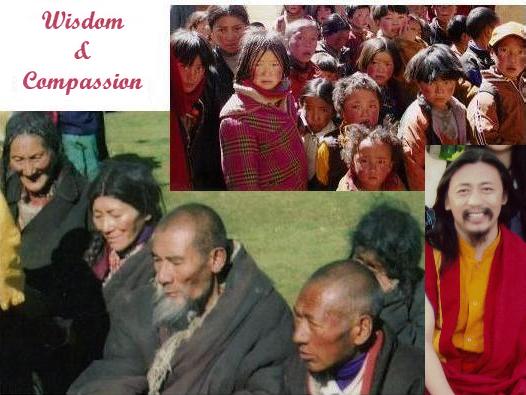
Freedom of Religion & Belief – China: Tibetan Monasteries Placed Under Direct Rule
Tibetan Yoga Center – Yoga Retreats
Contact: tibetanyogainfo@gmail.com
www.bhutanzopa.com.bt/AdventureTravel
The practice of Yoga is intimately connected to the religious beliefs and practices of both Buddhism and Hinduism. However there are distinct variations in the usage of yoga terminology in the two religions. In Hinduism, the term „Yoga“ commonly refers to the eight limbs of yoga as defined in the Yoga Sutras of Patanjali, written some time after 100 BCE, and means „yoke“, with the idea that one’s individual atman, or soul, would yoke or bind with the monistic entity which underlies everything (brahman). In the Vajrayana Buddhism of Tibet, however, the term „Yoga“ is simply used to refer to any type of spiritual practice; from the various types of tantra (like Kriyayoga or Charyayoga) to ‚Deity yoga‘ and ‚guru yoga‘. In the early translation phase of the Sutrayana and Tantrayana from India, China and other regions to Tibet, along with the practice lineages of sadhana, codified in the Nyingmapa canon, the most subtle ‚conveyance‘ (Sanskrit: yana) is Adi Yoga (Sanskrit). A contemporary scholar with a focus on Tibetan Buddhism, Robert Thurman writes that Patanjali was influenced by the success of the Buddhist monastic system to formulate his own matrix for the version of thought he considered orthodox. Read More: HERE
Early Buddhism incorporated meditative absorption states. The most ancient sustained expression of yogic ideas is found in the early sermons of the Buddha. One key innovative teaching of the Buddha was that meditative absorption must be combined with liberating cognition. The difference between the Buddha’s teaching and the yoga presented in early Brahminic texts is striking. Meditative states alone are not an end, for according to the Buddha, even the highest meditative state is not liberating. Instead of attaining a complete cessation of thought, some sort of mental activity must take place: a liberating cognition, based on the practice of mindful awareness. The Buddha also departed from earlier yogic thought in discarding the early Brahminic notion of liberation at death. Liberation for the Brahminic yogin was thought to be the realization at death of a nondual meditative state anticipated in life. In fact, old Brahminic metaphors for the liberation at death of the yogic adept were given a new meaning by the Buddha; their point of reference became the sage who is liberated in life. Read More: HERE
Dream Yoga or Milam (T:rmi-lam or nyilam; S:svapnadarśana)— the Yoga of the Dream State are a suite of advanced tantric sadhana of the entwined Mantrayana lineages of Dzogchen (Nyingmapa, Ngagpa, Mahasiddha, Kagyu and Bönpo). Dream Yoga are tantric processes and techniques within the trance Bardos of Dream and Sleep (Tibetan: mi-lam bardo) and are advanced practices of Yoga Nidra. Aspects of Dream Yoga sadhana are subsumed within the practice suite of the Six Yogas of Naropa. Read More: > HERE <
Tibetan yoga center was established to provide a program of study and practice in the Tibetan Buddhist (Vajrayana) tradition that would integrate the essence of these teachings and present them in a suitable way for practitioners in the West. The program combines the core practices relying on visualizations, yoga of channels, winds and drops, and insight into the nature of the mind (rigpa) for efficient progress on the path. The core teachings of Tibetan Yoga Center are ‚The yogas of the six bardos‘ of the Nyingma lineage of Tibetan Buddhism, summarized in the curriculum as seven courses (see the program section). The founder and master teacher of the center, Khenchen Lama Rinpoche, was at numerous occasions encouraged by his teachers to focus on helping Western students, particularly through these practices. To help bring these teachings closer to the background of Western practitioners, the program of the Tibetan Yoga Center also integrates elements of Western neuroscientific research on changes in behavior, mind and brain as a result of meditation. Building on the tradition of enlightened householder yogis in Tibet, the program of the center was developed for yogis of the current era – serious practitioners leading busy lives with work and family commitments who want to bring their spiritual practice to swift fruition to fully benefit sentient beings.
Tibetan Yoga Center operates on principles of a social business, offering teachings mostly by suggested donation and for minimal possible fees to cover expenses. The aim of the Tibetan yoga of mind is to develop universal loving kindness and compassion coupled with the ultimate wisdom of the nature of phenomena, the ultimate truth. At the basic level of achievement, one wishes happiness for oneself as well as other people.
At the medium level of achievement one realizes that the source of ultimate happiness is the understanding of the true nature of phenomena. One realizes that the most profound way to benefit sentient beings is to achieve enlightenment and works very hard towards this goal. On this path, one completely purifies his/her mental afflictions – anger, attachment, ignorance, jealousy and pride. The highest level of achievement in the Tibetan yoga of mind is the experiential understanding of our own Buddha nature – the deepest level of the mind. When one continuously sustains this realization in his/her mind stream, s/he becomes the embodiment of the union of primordial wisdom and compassion, and benefits sentient beings in limitless ways. This achievement is the essence of the Tibetan yoga and the deepest meaning of the term ’naljor‘.
TYPES OF YOGA IN TIBETAN BUDDHISM – There are six yanas (modes of spiritual practice) in Vajrayana: 1. Kriyayana, 2. Upayana, 3. Yogayana, 4. Mahayoga, 5. Anuyoga, and 6. Atiyoga. In Nyingma lineage, the main focus of practice is on Mahayoga, Anuyoga and Atiyoga.
Teaching and Practice Downloads: This section contains general teachings given by teachers of the Tibetan Yoga Center at various occasions as well as specific teachings that are part of the curriculum of the center. These teachings are available for free, but proper reference to the teachings if used as part of other materials should be included.
Previous some related #articles #videos:
Mountain Minorities and Indigenous Peoples
Yoga of Himalayas – Nuns & Communities
The Ninth Mandaean Camp Niagara Falls
UNESCO – The Tradition of Vedic Chanting
UN – Nagoya biopiracy agreement ‚is unexpected success‘
Saving the Bedouin Heritage and Biodiversity
A Call for Renewable Energy in Brazil – Belo Monte
Indigenous Australien Medicine – Bush Medicine
Build Hope – Sivananda Sevashram
ARGAN TREE – Argan Oil Morocco
Jain Tradition – Mahavir Jayanti India
Monasteries Environmental Himalayaprotection
Monks lead march to save Himalayas
Interfaith Center: Gala Dinner with Yusuf Islam
Gilgit (UNESCO Gilgit Manuscripts) Baltistan – National Conference Sufism
Bahá’í – Religion für eine neue Zeit
Introduction – Swami Vivekananda – Jnana Yoga
The Hindu approach to spiritual evolution leading to liberation or moksha or Self-realization is one of the four major paths or yogas:
-
the path of knowledge or Jnana yoga,
-
the path of mind control or Raja Yoga ,
-
the path of devotion of Bhakti yoga and
-
the path of action/work or Karma yoga.
#video Swami Vivekananda 1893 Speech at Parliament of Religions Part 1 of 4
Swami Vivekananda was the chief disciple of the 19th century saint Ramakrishna Paramahansa and the founder of the Ramakrishna Math and the Ramakrishna Mission. He is considered a key figure in the introduction of Indian philosophies of Vedanta and Yoga to the „Western“ world, mainly in America and Europe and is also credited with raising interfaith awareness, bringing Hinduism to the status of a major world religion during the end of the 19th century CE. Vivekananda is considered to be a major force in the revival of Hinduism in modern India.
He is perhaps best known for his inspiring speech which began: „Sisters and Brothers of America,“ through which he introduced Hinduism at the Parliament of the World’s Religions in Chicago in 1893.
The Council for a Parliament of the World’s Religions works to cultivate harmony among the world’s religious and spiritual communities to achieve a just, peaceful and sustainable world.
The first Parliament of Religions was held at the 1893 Chicago Columbian Exposition, and was the first formal meeting of the religious East and West. In 1988 the Council for a Parliament of the World’s Religions (CPWR) was founded to organize a centennial celebration of the original Parliament. Since 1993, three Parliaments have been held in Chicago, Cape Town, Barcelona and in 2009 the most recent Parliament was held in Melbourne, Australia.
Dr. Joachim Reinelt: Zur Zeit des indischen Mittelalters wanderten in weiten Teilen Indiens und Tibets tantrische Mystiker umher, die Nathas, Nathayogis oder Nathasiddhas genannt wurden. Sie praktizierten und lehrten Hatha- und Kundaliniyoga und hatten großen Einfluss auf das religiöse Leben der Menschen.
Gorakshanatha Saivism: Gorakhnath or Gorakshanatha Saivism is also known as Siddha Siddhanta and Nath tradition. It was founded by Gorakshanatha (Gorakhnath) who lived about 10th century AD. He is believed to be 3rd, 4th or 5th in a line of 12 prominent teachers of this tradition, which has followers in both Buddhism and Hinduism.
He was said to be a disciple of Matsyendranatha who was from in Nepal. Followers of this sect believe that knowledge of this tradition was received by Matsyendranath directly from Siva himself. Gorakshanatha is credited with such works as Siddha Siddhanta Paddhathi and Viveka Martanda. He composed them in Hindi. He also created 12 monastic orders across Northern India in an effort to preserve the Adinatha tradition. Other important works of this tradition are Hathayoga Pradipika, Gheranda Samhita, Siva Samhita and Jnanamrita.
History of the Nathas – The history of ancient Indian sadhu texts reveals a succession of several main groups. There were the Sadhs, Yatis, Siddhas, Nathas, Pashupatis, Sant-Mats, Dasnamis and Nagas. Apart from these, many small sadhu sects have existed and played their part in the great stream of Indian life. In early history, it would appear that some sects were interwoven with others, and some merged or developed into other sects. Some thus became extinct, and others are still with us.
Full Article: http://www.saivism.net
http://www.facebook.com/parliamentofreligions
http://en.wikipedia.org/wiki/Swami_Vivekananda
Bhutan http://en.wikipedia.org/wiki/Gross_national_happiness
UN – The Challenge of Human Rights and Cultural Diversity
UNESCO – Intangible Cultural Heritage
UN – Nagoya biopiracy agreement ‚is unexpected success‘
http://www.twnside.org.sg/title2/books/The.Road.to.an.Anti-Biopiracy.Agreement.htm
Amnesty International – What are economic, social and cultural rights?
*************************************
China: Tibetan Monasteries Placed Under Direct Rule
(New York) – The Chinese government has ended a key policy of allowing Tibetan monasteries to be run by monks who comply with government regulations and have instead introduced a system that will place almost every monastery in Tibet under the direct rule of government officials who will be permanently stationed in each religious institution, Human Rights Watch said today.
The new system now requires an unelected „Management Committee“ – also referred to as zhusi danwei/gongzuozu („monastic government work-unit“)- to be established in every monastery, with up to 30 lay officials stationed in each monastery, depending on the size of the institution, according to a February 15, 2012 article in the government-run Global Times. The new „Management Committees“ will run the monasteries and will have authority over the previous „Democratic Management Committees,“ which will now be responsible for rituals and other matters.
The freedom to leave or discontinue membership in a religion or religious group —in religious terms called „apostasy“ —is also a fundamental part of religious freedom, covered by *Article 18 of the Universal Declaration of Human Rights.[2]
Freedom of religion is a principle that supports the freedom of an individual or community, in public or private, to manifest religion or belief in teaching, practice, worship, and observance; the concept is generally recognized also to include the freedom to change religion or not to follow any religion.[1]
#video Meeting with Special Rapporteur on Freedom of Religion or Belief, Heiner Bielefeldt As always saying something on the topic of freedom of religion or belief, to say it again, the most shocking experience when dealing with case of violations of freedom of religion is the extreme manifestation and degree of hatred “ http://www.youtube.com/watch?v=81qyyKzntJw
http://www.hreoc.gov.au/human_rights/religion/index.html
http://en.wikipedia.org/wiki/Freedom_of_religion
http://www.ohchr.org/EN/Issues/FreedomReligion/Pages/FreedomReligionIndex.aspx
February 29, 2012
Australian Broadcasting Corporation – Exiled PM wants ‚fact finding‘ mission in Tibet
March 3, 2012
UN Human Rights Chief asked when she would visit Tibet
Mar 6, 2012
UN calls on China to stop forced settlement of Tibetan Nomads
8 March 2012
“Unfinished progress” – UN expert examines food systems in emerging countries reports* on China, Mexico and South Africa to the Human Rights Council. In China, local-level authorities often have allowed land-grabbing at the expense of poor rural households. And between 50 and 80 per cent of the 2.25 million nomads on the Tibetan plateau may be relocated into settlements close to rural cities, overhauling the food and farming practices of this vulnerable community as part of a programme to abandon nomadic life and modernize agriculture. ( Latest Water UN Report – World Consumption of modern agriculture on fresh water by 70% )
chinadialogue Tibetan herders are struggling to adjust to sedentary life on the edge of the city of Golmud. Xia Liwei visited one family and listened to their story. http://www.chinadialogue.net/–Who-are-these-people-now
chinadialogue As China seeks to protect a delicate corner of Qinghai, 50,000 herders have been moved off the grasslands. Ill-prepared for urban life, they face a bleak future, write Guan Guixia and Suonan Wangjie. http://www.chinadialogue.net/–Hard-times-for-eco-migrants
TIBETAN NOMADS Tibetan herder with a yak Nomadic herders are known as drokpa. They make up about 25 percent of Tibetans in Tibet. In some Tibetan counties they make up 90 percent of the population. http://factsanddetails.com/china.tibetan nomads
SWAMI VIVEKANANDA’S BIRTHDAY CELEBRATION : Live Webcast
http://www.belurmath.org/news_archives/swami-vivekanandas-birthday-celebration-live-webcast/
http://www.belurmath.org/news_archives/2012/01/10/national-youth-day-12-january-2/
Previous #articles #videos # development #reliefwork
http://ramakrishna.org Ramakrishna – Vivekananda Center of New York
http://en.wikipedia.org/wiki/Vedanta
BELUR MATH – REGENERATE RURAL INDIA
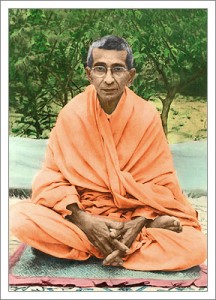
www.ramakrishna.org N.Y.
Advaita Vedanta (Advaita VedÄ�nta; Sanskrit अद्वैत वेदान्त ) is considered as the most influential sub-school of the VedÄ�nta (literally, end or the goal of the Vedas, Sanskrit) school of Hindu philosophy. Other sub-schools of VedÄ�nta are Dvaita and ViśishṭÄ�dvaita. Advaita (literally, non-duality) is a monistic system of thought. „Advaita“ refers to the identity of the Self (Atman) and the Whole (Brahman).
The key source texts for all schools of VedÄ�nta are the Prasthanatrayi—the canonical texts consisting of the Upanishads, the Bhagavad Gita and the Brahma Sutras. The first person to explicitly consolidate the principles of Advaita Vedanta was Adi Shankara, while the first historical proponent was Gaudapada, the guru of Shankara’s guru Govinda Bhagavatpada. Read More: > Here <
Belūr Maṭh is the headquarters of the Ramakrishna Math and Mission, founded by Swami Vivekananda, a chief disciple of Ramakrishna Paramahamsa. It is located on the west bank of Hooghly River, Belur, West Bengal, India and is one of the significant institutions in Calcutta. The temple is notable for its architecture that fuses Hindu, Christian and Islamic motifs as a symbol of unity of all religions. Read More: > HERE <
The essence of Vedanta is that there is but one Being and that every soul is that Being in full, not a part of that Being. All the sun is reflected in each dew-drop. Appearing in time, space and causality, this Being is man, as we know him, but behind all appearance is the one Reality. Unselfishness is the denial of the lower or apparent self. We have to free ourselves from this miserable dream that we are these bodies. We must know the truth, „I am He“. We are not drops to fall into the ocean and be lost; each one is the whole, infinite ocean, and will know it when released from the fetters of illusion. Infinity cannot be divided, the „One without a second“ can have no second, all is that One. The Vedanta says that the Soul is in its nature Existence absolute, Knowledge absolute, Bliss absolute.
The ideology of Ramakrishna Math and Mission consists of the eternal principles of Vedanta as lived and experienced by Sri Ramakrishna and expounded by Swami Vivekananda. This ideology has three characteristics: it is modern in the sense that the ancient principles of Vedanta have been expressed in the modern idiom; it is universal, that is, it is meant for the whole humanity; it is practical in the sense that its principles can be applied in day-to-day life to solve the problems of life. The basic principles of this ideology are given here: http://belurmath.org/Ideology.htm
http://belurmath.org/what_new.htm Releasing shortly… A Documentary on BELUR MATH The heart of Ramakrishna Movement . Bhakti Yoga does not say ‚give up‘; it only says ‚Love; love the Highest‘; and everything low naturally falls off from him, the object of whose love is this Highest. — Swami Vivekananda / 12th January is celebrated as National Youth Day but do we know the relevance of this day? What is one supposed to do on this day, how does one celebrate? Is it a holiday?
AN APPEAL – Situated in one of the most picturesque spots of the Himalayas at a height of about 7000 ft., Advaita Ashrama, Mayavati, was started by Swami Vivekananda in 1899. It is a branch of Ramakrishna Math, Belur. The special object of the Ashrama, as its name implies, is to study, practise, and preach Advaita or the eternal truth of the Oneness of all existence. This centre has been entrusted with the publication and propagation of Ramakrishna-Vivekananda and Vedanta literature. It is also publishing Prabuddha Bharata, the oldest English monthly magazine in India, since the last 115 years.
Apart from being a monastery, this Ashrama runs a hospital called the Mayavati Charitable Hospital. It came into being in response to the pressing needs of the neighbouring villages, where live some of the poorest people of the country. Patients come here from distant places across hills and dales, sometimes trudging a distance of nearly 50 km. Their helplessness in sickness would touch any heart if only it were known. We run a 25 bed indoor hospital and an outdoor patients department in this out-of-the way place since 1903. All treatment is done free of charges. Moreover, Surgical Camps, Dental Camps, Urological Camps, Eye Camps etc. are held throughout the year to provide special care to the poor villagers of Kumaon region. We bring qualified doctors from different cities to conduct such medical camps.
In order to accommodate these doctors we are building a Doctors‘ Quarters cum guest house. The new doctors’ quarters will have 8 rooms with attached baths for the doctors on the first floor and 6 rooms for guests and a meditation hall on the second floor. We request you to contribute liberally for this cause
The expected cost of construction, as submitted by the architects, will be Rs. 60 lakhs. Transportation cost is very high here because the materials have to be procured from 150 to 450 km away. The uplift of the backward and downtrodden has always been one of the key objectives of Ramakrishna Math & Ramakrishna Mission, of which this Ashrama is a branch. It is needless to mention here that if this institution has attained to its present stature, it is because of love, sympathy, and benevolence of charitably inclined people like you. The donation has to be made in favour of Advaita Ashrama and can be sent to the address given below.
May the Lord help us work in a true spirit of worship.
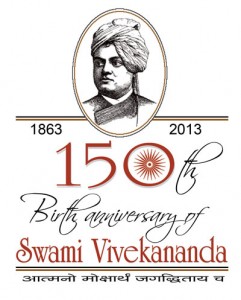
Activities of Ramakrishna Math and Ramakrishna Mission
From April 2006 to March 2007
- TYPES OF SERVICE
- Medical Service
- Educational Service
- Work in Rural and Tribal Areas
- Relief and Rehabilitation Work
- Women Welfare Programmes
- Youth Welfare Programmes
- Mass Contact
- Spiritual and Cultural Work
- Celebrations
- http://belurmath.org/activities.htm#Tribal
- Prabuddha Bharata Journal started by Vivekananda 1896
Mountain Minorities and Indigenous Peoples

NGO Development Projects Active in Tibet
About ICIMOD – The International Centre for Integrated Mountain Development, ICIMOD, is a regional knowledge development and learning centre serving the eight regional member countries of the Hindu Kush-Himalayas – Afghanistan, Bangladesh, Bhutan, China, India, Myanmar, Nepal, and Pakistan – and based in Kathmandu, Nepal.
Globalisation and climate change have an increasing influence on the stability of fragile mountain ecosystems and the livelihoods of mountain people. ICIMOD aims to assist mountain people to understand these changes, adapt to them, and make the most of new opportunities, while addressing upstream-downstream issues. We support regional transboundary programmes through partnership with regional partner institutions, facilitate the exchange of experience, and serve as a regional knowledge hub. We strengthen networking among regional and global centres of excellence. Overall, we are working to develop an economically and environmentally sound mountain ecosystem to improve the living standards of mountain populations and to sustain vital ecosystem services for the billions of people living downstream – now, and for the future.
International Mountain Day, celebrated on December 11, gives us an opportunity to reflect on the relevance of mountains for the world. This year the International Mountain Day theme focuses on indigenous peoples and other minorities living in the mountains. The purpose is both to highlight the threats and challenges faced by these communities, and to acknowledge the invaluable knowledge they have and the contributions they can make towards overcoming global challenges of poverty and loss of diversity in a rapidly changing world.
A majority of the world’s indigenous women and men live in mountain regions, many on the margins of society and facing poverty and exclusion. The Hindu Kush-Himalayan region has some of the highest diversity of indigenous peoples and other minorities in the world. An ICIMOD report identified more than 600 living languages in the Himalayas, 400 spoken by less than 100,000 people. According to current forecasts, ninety per cent of all languages could disappear within 100 years. The loss of these languages not only erodes an essential component of a group’s identity, it is also a loss to heritage for all humankind.
The UN General Assembly adopted the UN Declaration on the Rights of Indigenous Peoples in September 2007, marking an important step in international efforts to preserve the identity of indigenous peoples. However, implementation has a different speed and different levels of commitment in different countries.
In agricultural terms, mountains are often considered ‘marginal lands’, unsuitable for modern commercial farming which focuses on cultivation of single crop varieties for large markets. Indigenous mountain people and other mountain communities continue to use traditional practices and techniques including sophisticated terracing systems, water transportation and irrigation schemes, and a combination of pasture, forestry and farming practices. Indigenous women and men serve as custodians of this traditional knowledge on how to farm under difficult mountain conditions, and how to conserve important reservoirs of agricultural biodiversity.
They sustainably farm a wide variety of crops that are adapted to a range of different elevations, slope conditions, and micro-climates, and this knowledge will be of great, if as yet little noticed, value in the world’s efforts to adapt to climate and other drivers of change. The autonomous adaptation practiced by mountain communities consists of community-based interventions that address underlying causes of vulnerability and reduce the risk of possible adverse impacts of climate change by building upon the existing rich indigenous knowledge base on adaptation to environmental change and helping to strengthen the resilience of the communities. Women especially play a critical role in gendered indigenous knowledge. Their roles and expertise have yet to be acknowledged, but has great potential for adapting to multiple drivers of change.
Indigenous mountain communities are connected to the land, the environment, and natural resources in ways that are often inextricably intertwined and therefore expressed in spiritual and socio-cultural terms. Respecting this worldview, and preserving the languages, music, artwork, folk tales, culture, meanings, and myths that express it, is critical for the survival of indigenous communities in mountain areas. This ‘intangible heritage’ also enriches the global community, providing inspiration and insights for realising a more sustainable relationship between humankind and the environment.
A scene from Tibetan Documentary „Leaving Fear Behind,“ shows a nomad school in Tibet (Amdo) working to preserve Tibetan Language and culture as it’s very existence is under threat from Chinese Government policies. Find out more: http://studentsforafreetibet.org Leaving Fear Behind: The Film the Chinese Government Doesn’t Want the World to See. // sumit sadhak practicing handstand in himalyas on the bank of ganga river one of the most important places for yogis.
The involvement of indigenous mountain communities is an important prerequisite for sustainable mountain development. Therefore, as governments work toward addressing mountain development priorities, it is critical that they live up to their commitments outlined in the UN Declaration on the Rights of Indigenous Peoples.
We hope that this year’s International Mountain Day will help to increase awareness of the central role of Minorities and Indigenous Peoples for mountain development, and to motivate all citizens, policy makers, and development actors to recognise the importance of their contribution to sustainable development. We trust that the Day will encourage organisations to invite indigenous and traditional mountain communities to participate actively in national and international efforts to understand and adapt to the multiple drivers of change, including climate change, in the mountains of the world.
With best wishes, Andreas Schild http://www.icimod.org
Culture and Development – Placing culture at the heart of development policy constitutes an essential investment in the world’s future and a pre-condition to successful globalization processes that take into account the principles of cultural diversity. It is UNESCO’s mission to remind all States of this major issue.
As demonstrated by the failure of certain projects underway since the 1970s, development is not synonymous with economic growth alone. It is a means to achieve a more satisfactory intellectual, emotional, moral and spiritual existence. As such, development is inseparable from culture. Strengthening the contribution of culture to sustainable development is a goal that was launched in connection with the World Decade for Cultural Development (1988-1998). Ever since, progress has been made thanks to a corpus of standard-setting instruments and demonstration tools such as cultural statistics, inventories, regional and national mapping of cultural resources.
In this regard, the major challenge is to convince political decision-makers and local, national and international social actors to integrating the principles of cultural diversity and the values of cultural pluralism into all public policies, mechanisms and practices, particularly through public/private partnerships.
This strategy will aim, on the one hand, at incorporating culture into all development policies, be they related to education, science, communication, health, environment or tourism and, on the other hand, at supporting the development of the cultural sector through creative industries. By contributing in this way to poverty alleviation, culture offers important benefits in terms of social cohesion. Read more: http://portal.unesco.org/culture/en
The Challenge of Human Rights and Cultural Diversity – United Nations Background Note by Diana Ayton-Shenker:
The end of the cold war has created a series of tentative attempts to define „a new world order“. So far, the only certainty is that the international community has entered a period of tremendous global transition that, at least for the time being, has created more social problems than solutions.
The end of super-power rivalry, and the growing North/South disparity in wealth and access to resources, coincide with an alarming increase in violence, poverty and unemployment, homelessness, displaced persons and the erosion of environmental stability. The world has also witnessed one of the most severe global economic recessions since the Great Depression of the 1930s.
At the same time, previously isolated peoples are being brought together voluntarily and involuntarily by the increasing integration of markets, the emergence of new regional political alliances, and remarkable advances in telecommunications, biotechnology and transportation that have prompted unprecedented demographic shifts.
The resulting confluence of peoples and cultures is an increasingly global, multicultural world brimming with tension, confusion and conflict in the process of its adjustment to pluralism. There is an understandable urge to return to old conventions, traditional cultures, fundamental values, and the familiar, seemingly secure, sense of one’s identity. Without a secure sense of identity amidst the turmoil of transition, people may resort to isolationism, ethnocentricism and intolerance.
This climate of change and acute vulnerability raises new challenges to our ongoing pursuit of universal human rights. How can human rights be reconciled with the clash of cultures that has come to characterize our time? Cultural background is one of the primary sources of identity. It is the source for a great deal of self-definition, expression, and sense of group belonging. As cultures interact and intermix, cultural identities change. This process can be enriching, but disorienting. The current insecurity of cultural identity reflects fundamental changes in how we define and express who we are today. Read More: * HERE*
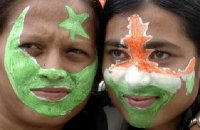
Build Hope – Sivananda Sevashram
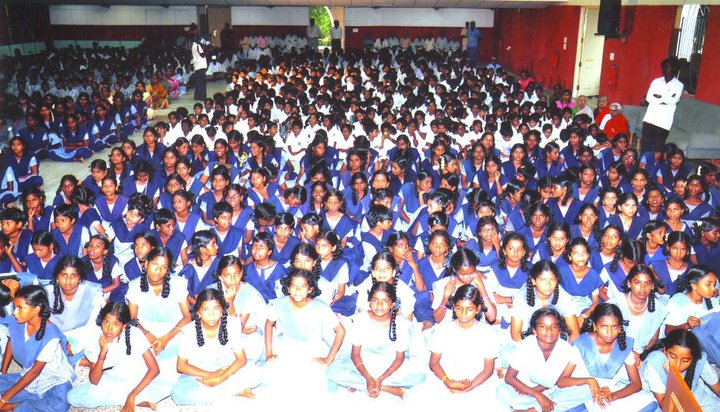
SERVE, LOVE, GIVE, PURIFY, MEDITATE, REALISE. So Says Sri Swami Sivananda Saraswati Maharaj
Swami Sivananda Saraswati (September 8, 1887—July 14, 1963) was a Hindu spiritual teacher and a well known proponent of Yoga and Vedanta. Sivananda was born Kuppuswami in Pattamadai, in the Tirunelveli district of Tamil Nadu. He studied medicine and served in Malaya as a physician for several years before taking up monasticism. He lived most of the later part of his life near Muni Ki Reti, Rishikesh. He is the founder of The Divine Life Society (1936), Yoga-Vedanta Forest Academy (1948) and author of over 200 books on yoga, vedanta and a variety of other subjects. He established Sivananda Ashram, the location of the headquarters of The Divine Life Society (DLS), on the bank of the Ganges at Shivanandanagar, at a distance of 3 kilometres from Rishikesh.
Sivananda Yoga, the yoga form propagated by him, are now spread in many parts of the world through Sivananda Yoga Vedanta Centres, but these centres are not affiliated with Swami Sivananda’s original ashrams which are run by the Divine Life Society. Read More: > HERE <
His Holiness Swami Sivananda was born in Pathamadai in Thirunelveli district, South India. Ever since his childhood, His Holiness was totally devoted to serving others. He worked very hard and graduated in Medicine. As a doctor he earned money but could not obtain peace of mind. He realized that earning a lot of money does not mean earning peace and happiness. Instead, spiritualism alone can help one attain MUKTHI or MOKSHA. His mind was in search of peace and was in a quest for the ultimate purpose of being born in this world. He felt that everyone must have a goal in life and one must lead one’s life with purpose and meaning.
Swami Sivananda proceeded to Rishikesh in North India, where he realized his goal while sitting on the banks of Ganges. He advocated non-violence, truth and worship. Many were impressed by his simplicity and teachings. He gathered a lot of followers and in due course, a mission was started in a small hut which today proudly stands as SWAMI SIVANANDA SARASWATHI SEVASHRAM at Rishikesh. His teachings were simple and he saw God as Omnipotent. He advocated the principle that „ONE CAN FIND GOD IN HIS/HER OWN HEART BY BEING HONEST AND LEADING A SIMPLE LIFE“. He believed the teachings of the Quran, Bhagavath Gita and Bible to be the same. He also believed that there was no need for one to go in search of God, as one can find God in their own hearts by not being selfish, but by making sacrifices for others. Many devotees all around the world were fascinated by his teachings and started several missions in Yoga, Siddha and other spiritual awakenings.The late founders of Sivananda Ashram, Sri S. V. Iyer and Dr. V. Mangalam, started this organization after being enlightened by Swamiji that the only real happiness a human being could find was by serving others.
We hope Swamiji’s teachings inspire and motivate all of us to do what we can to help others lead a better life.
Shri. S. V. Iyer and Dr. V. Mangalam, an elderly couple, started Sivananda Saraswathi Sevashram in 1945 with just 3 kids and with the blessings of Swami Sivananda of Rishikesh. More popularly known as „Sivananda Ashram/Orphanage/Gurukulam“, the organization has grown to be a very well known and well recognized social institution in the country today.
We are a „National Awardee“ institution recognized by the Government of India in 1983.
Sivananda Saraswathi Sevashram is a non-profit organization with the primary objective of protecting orphans, destitute women, the physically handicapped, AIDS-affected children, and the elderly.
With the experience of more than 60 years of recorded services to thousands of poor orphans, Sivananda Orphanage effectively helps transform/grow these orphans to productive citizens. We not only provide food, education and shelter, but also instill character and morals to help them grow, learn and eventually become independent.
Many, including former Prime Minister of India, Shri Pandit Jawaharlal Nehru have visited our ashram and witnessed our committed work. We currently look after 300 children and 80 elderly, all of whom are accepted and cared for with love and affection.
Sri Ganga River of Life Festival 2010
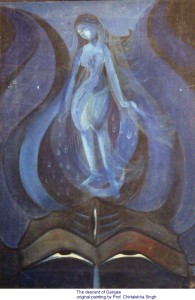
http://sivanandaonline.org/gangadussehra
Gangapujan Dashahara or Dussehra *
* The Descent of the River Ganges, Srimad Bhagavatam 5th Canto 17the Chapter Summary by HDG Srila A.C. Bhaktivedanta Swami Prabhupad.
Ganga Dussehra is the annual celebration of the most sacred of Hindu rivers, Ganga, or the Ganges. The celebration lasts for ten days from the new moon at the beginning of Jyaistha (amanta reckoning). The last day, 10 Jyaistha, is the holiest of them all (this normally occurs in June in the Gregorian calendar, or occasionally at the end of May). Devotees are expected to bathe in the Ganga. If they cannot reach the banks of the river, many devotees will use water drawn from the Ganga that is kept at home to bathe. Alternatively, the devotee will bathe in ordinary water whilst invoking Ganga by prayer. This bathing is considered to impart purity from sin.
Ganga Dussehra: Swami Sivananda’s „Hindu Fasts and Festivals“ and Swami Krishnananda’s „Spiritual Import of Religious Festivals“ have detailed descriptions of the festivals listed here. Click here for ordering details. This Spiritual Calendar is for worships held at the Divine Life Society, Rishikesh, India. Some of the dates may not necessarily hold true for other parts of the world. http://www.dlshq.org/calendar.htm
Sri Ganga Dussehara (Jayesht Shukl Dashmi) 21st June 2010 – This day is auspicious because on this day the sacred Ganges descended in the earth. It can be called birthday of Ganga. A dip in the Ganges or in any other river invoking Goddess Ganges, is beneficial and is said to be purified from ten sorts of sins. Worship of the river deity is done by incense, light, sandal wood, flowers, milk, etc.. Flour balls are fed to aquatic animals.
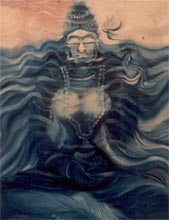
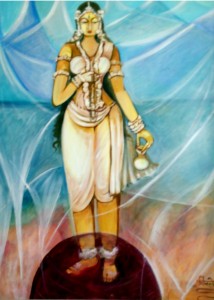
There was a ruler named Sagar. He performed Ashua Medha Yageya. God Indra stole away the ashva (Horse). Sagar’s grandson Anshuman took over the responsibility of the search of the horse. After searching all over, he reached Netherlands with 60,000 followers, where he saw god personified as Kapil saint, was under meditation and the horse was grazing nearby.
The followers of Anshuman shouted, “thief-thief”. Thereupon Kapil rishi opened his eyes and by the blazing lighting of which all were reduced to ashes. For the final cremation ritual of those dead, Bhagirath undertook severe austerities. B’rhma when pleased and asked him to demand a boon. Bhagiratha requested for the descent of Ganges on land. B’rhma agreed but expressed his apprehension if the earth could shoulder the weight and flow of the Ganges, in that case of Bhagirath should invoke God Siva. When Siva agreed to hold the fall of Ganges, B’rhma let it loose from the heavens (swarga lok). The Ganges was then interlocked in the tufts of Siva and Bhagirath’s purpose, of washing the ashes of this ancestors in the water of the Ganges, remained still. There upon Bhagirath invoked Siva, who when please, released the Ganges as river Ganges on the land. The release of the sacred water of the Ganges and its flow through different cities of India is very fortunate, pious, and auspicious for the Hindus of India.
Ganges was not merely a river. She (Goddess Ganga) was devoted to the service of lord K’rsna in the heavens (Swarge-Baikunth). She was thus very near the lord, which made Radha jealous. later cursed her to go down to earth and flow as a river. Ganga, in retaliation, also cursed Radha that you will be close to K’rsna, yet you will always imagine him far away, tolerate separatism and never be peaceful. Thus since then Gange flows as a Ganges river, under the ancient curse of Radha and under the modern curse of city pollution. In the modern times of Kaliyuga, Ganges is of utmost and importance, as according to Narade Purana, all pilgrimages were of influence in Sateya yuga then Pushkar in Treta and Kurukshtra in Dwapar Yuga.
Article by Prof. Chitralekha Singh
Dean: Institute of Visual, Performing Arts & Research, Mangalayatan University, Beswan, Aligarh. Arts Visit at: www.artistchitralekha.com, e-mail: chitralekha@artlover.com, mob . 91 9319103482
SRI VIDYA, Vidyas in Hinduism & Yoga Upanishads
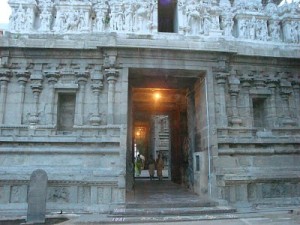
108 Upanishads | Vedanta Spiritual Library
Mess.166: A Holy Trip to Arunachaleshwara
http://taonews123.blogspot.com
ŚrÄ� VidyÄ� (also spelled „Shri Vidya“) is the name of a Hindu religious system devoted to the goddess LalitÄ� TripurasundarÄ� or simply TripurasundarÄ� (‚Beautiful Goddess of the Three Cities‘). According to British scholar Gavin Flood she is a tantric form of the goddess ŚrÄ� (also called LakṣmÄ�), consort of Vishnu. However, the late orthodox leader of the largest Samaya school of ŚrÄ� VidyÄ�, Sri Chandrasekharendra Saraswati Swamigal, says that the ŚrÄ� in ŚrÄ� VidyÄ� is a title of respect meaning The VidyÄ� and has no connotation to LakṣmÄ�. And Indian scholar V.R. Ramachandra Dikshitar states she is a form of Durga or Paravati, consort of Shiva , as well as several names from the LalitÄ� SahasranÄ�ma which call her the beloved of Shiva. The Sanskrit word vidyÄ� means „knowledge“ or „lore.“ A thousand names for this form of DevÄ� are recited in the LalitÄ� SahasranÄ�ma, which includes ŚrÄ� VidyÄ� concepts. Read More: > HERE <
The Sri Yantra (shown here in the three-dimensional projection known as Sri Meru Chakra or Maha Meru used mainly in rituals of the Srividya Shakta sects) is central to most Tantric forms of Shaktism.
Meru Chakras are frequently a central focus and ritual object for this worship of the Goddess. They are a more potent form of the Sri Yantra, since they are three-dimensional. Meru Chakras can be found in rock crystal and in metal, often a traditional panchaloha formula of silver, antimony, copper, zinc, and pewter, which enhances the flow and generation of Sri’s beneficial energies, covered in gold.
In the theology of the ŚrÄ� VidyÄ� the goddess is supreme, transcending the cosmos which is a manifestation of her. The school has an extensive literature of its own. The details of the beliefs vary in different texts, but the general principles are similar to those found in Kashmir Shaivism.
The goddess is worshipped in the form of a mystical diagram (Sanskrit: yantra) of nine intersecting triangles, called the śrÄ�cakra („Chakra of ŚrÄ�“) that is the central icon of the tradition.
SRI CHAKRA by S. SHANKARANARAYANAN – SRI CHAKRA, the king of chakras is a master plan of manifestation drawn by the divine Draughtsman on the board of the infinite, a transcript of the Transcendent, a symbol-image of the supernal verities. The spiritual and occult tradition of the worship of the Mother Goddess and the Sadhana of Srividhya are explained in sixteen chapters in terms of modern thought and understanding. Based on authentic and authoritative Tantric texts the exposition in English is inspiring and original, almost a classic in the field of esoteric literature.
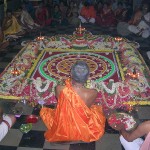
About the Author: Though his academic attainments are in Mathematics and his professional interests lie in a specialised field of industrial management, Sri S. Shankaranarayan has retained his first love for Sanskrit. In his childhood he was introduced to the ancient Sanskrit lore by his grandfather, Sri S. Narayana Iyer, who was himself a deep initiate in Sri Vidya, Later he came under the dynamic influence of Sri Kapali Sastriar. Shankaranarayanan cherishes a special regard for this tradition of the worship of the Divine Mother and his treatises on Devi Mahatmyam-both in Tamil and English have acquired an authenticity of their own. The present work on Sri Cakra, revealing as it does the depth of his scholarship, practical insight and occult knowledge, promises to be a classic on the subject. Endowed with luminous intellect, well-versed in the modes of esoteric worship and awake with an active spiritual aspiration, Shankaranarayanan is marked out to play a singular role in the resuscitation of the spiritual and occult tradition of India in terms of modern thought and understanding. -M. P. PANDIT
Buy the Book here: > www.exoticindiaart.com
- http://www.sriyantraresearch.com
- Ramana Maharshi – Sri Chakra Puja, every Friday <
- Meet International Vedanta Society, studies, friends at fb <
- Meet Kashmir Shaivism, friends and studies, at fb <
- Meet Shaktism „Doctrine of the Goddess“ at fb <
- Meet Hinduism, friends, fans, studies at fb <
- Meet Jivan Mukta, friends, studies at fb < (> Jivan Mukta <)
- Meet Prem Nirmal Holistic Counseling, studies, friends at fb <
- http://en.wikipedia.org/wiki/Flower_of_Life
CELEBRATION OF TAGORE´s 150th BIRTHDAY
TAGORE, Crisis in Civilization , There are Real Alternatives. A.E. Inst.
Rabindranath Tagore’s Birthday
Rabindranath Tagore (7 May 1861 – 7 August 1941), sobriquet Gurudev, was a Bengali polymath. As a poet, novelist, musician, and playwright, he reshaped Bengali literature and music in the late 19th and early 20th centuries. As author of Gitanjali and its „profoundly sensitive, fresh and beautiful verse“, in 1913 being the first non-European to win the Nobel Prize in Literature, Tagore was perhaps the most important literary figure of Bengali literature. He was a mesmerising representative of the Indian culture whose influence and popularity internationally perhaps could only be compared to that of Gandhi, whom Tagore named ‚Mahatma‘ out of his deep admiration for him. A Pirali Brahmin from Kolkata, Tagore was already writing poems at age eight.At age sixteen, he published his first substantial poetry under the pseudonym Bhanushingho („Sun Lion“) and wrote his first short stories and dramas in 1877. Tagore denounced the British Raj and supported independence. His efforts endure in his vast canon and in the institution he founded, Visva-Bharati University. Read More: > HERE <
Albert Eintstein Institute, About Our Name – Albert Einstein was deeply concerned about war, oppression, dictatorship, genocide, and nuclear weapons. He was willing to explore new approaches to confronting these problems of political violence, although he was not always happy with the choices available to him. At various times he was a war resister, a supporter of the war against the Nazi system, and an advocate of world government. In his later life, he became enormously impressed with the potential of nonviolent struggle. In 1950, he remarked on a United Nations radio broadcast that, „On the whole, I believe that Gandhi held the most enlightened views of all the political men in our time….“
Today, the Albert Einstein Institution continues work on that aspect of Einstein’s thought, examining the potential of nonviolent struggle to resolve the continuing problems of political violence.
Applications of Nonviolent Action (AHIMSA) – Nonviolent struggle can be used in a variety of circumstances for a variety of objectives. These include:
Dismantling dictatorships, Blocking coups d’état, Defending against foreign invasions and occupations, Providing alternatives to violence in extreme ethnic conflicts, Challenging unjust social and economic systems, Developing, preserving and extending democratic practices, human rights, civil liberties , and freedom of religion, Resisting genocide
More information can be found about each of these applications in the > publications section < of our web. site.
K. J. Yesudas (Carnatic Music) www.hrw.org
Yama, niyama, asana, pranayama, pratyahra, dharana, dhyana and samadhi are the eight limbs of yoga . Ahimsa, satya, asteya, bramacharya and aparigraha are the five yamas – The yoga sutras of Patanjali, 2.30-31
In the classical yoga system described by Patanjali more than two thousand years ago, the first stage (or limb, as they are generally called) of yoga is Yama (ethical disciplines) and of these, Ahimsa is the first. (The ethical Do´s and Don´ts or commandments for a propper way of life.)
In short, according to Patanjali, ahimasa, non-violence or, as Desikashar defines it, “Consideration for all living creatures, especially those who are innocent, in difficulty or worse off than we are” should be the very beginning of any yoga practice.
Sadhana : the realisation of life by Rabindranath Tagore Rabindranath Tagore (1861-1941) was a Bengali poet, philosopher, artist, playwright, composer and novelist. India’s first Nobel laureate, Tagore won the 1913 Nobel Prize for Literature. He composed the text of both India’s and Bangladesh’s respective national anthems. Tagore travelled widely and was friends with many notable 20th century figures such as William Butler Yeats, H.G. Wells, Ezra Pound, and Albert Einstein. While he supported Indian Independence, he often had tactical disagreements with Gandhi (at one point talking him out of a fast to the death). His body of literature is deeply sympathetic for the poor and upholds universal humanistic values. His poetry drew from traditional Vaisnava folk lyrics and was often deeply mystical.
Sadhana is a collection of essays, most of which he gave before the Harvard University, describing Indian beliefs, philosophy and culture from different viewpoints, often making comparison with Western thought and culture. (Summary by Peter Yearsley/Wikipedia)
CONTENTS: I. THE RELATION OF THE INDIVIDUAL TO THE UNIVERSE, II. SOUL CONSCIOUSNESS,III. THE PROBLEM OF EVIL, IV. THE PROBLEM OF SELF, V. REALISATION IN LOVE, VI. REALISATION IN ACTION, VII. THE REALISATION OF BEAUTY, VIII. THE REALISATION OF THE INFINITE
FULL TEXT AT PROJEKT Gutenberg < TAGORE AT SACRED TEXT´s < ( Gitanjali [1913], Saddhana, The Realisation of Life [1916] The Crescent Moon [1913], Fruit-Gathering [1916], Stray Birds [1916], The Home and the World [1915], Thought Relics [1921] Songs of Kabîr[1915])
Project Gutenberg, abbreviated as PG, is a volunteer effort to digitize and archive cultural works, to „encourage the creation and distribution of eBooks.“ Founded in 1971 by Michael S. Hart, it is the oldest digital library. www.gutenbergnews.org & www.gutenberg.org
- Tagore, Gandhi and India today <
- VISVA-BHARATI , RABINDRANATH TAGORE – YOGAH ,SCIENCE, POETRY <
- Vedanta, Quantum Physics & Erwin Schrödinger <
- AHIMSA IN YOGA, MUSIC AND SPIRITUALITY <
- The Universal Declaration of Human Rights < , United Nations: Human Rights <
- Meet Human Rights Watch, friends at fb <
- Meet Project Gutenberg, Online Library , studies, friends at fb <
- M.K. Gandhi Institute for Nonviolence, studies, friends at fb <
- Meet The Nobel Women’s Initiative, studies, friends at fb <
- Meet Council for a Parliament of the World’s Religions (CPWR), friends, fans at fb <
Sripad Vaiyasaki Das & the Kirtan Explosion Band
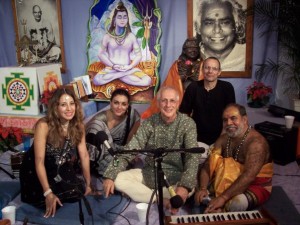
www.bhaktivedantahospital.com www.barsanaeyecamp.com
http://en.wikipedia.org/wiki/Bhakti_Yoga
Internationally recognized for his musical abilities to perform the ancient kirtan songs, Vaiyasaki Das approaches kirtan and devotional music from the ancient Vedic tradition of India. Vaiyasaki, who is an initiated disciple of Bhaktivedanta Swami, spent many years in India and Bangladesh learning the ragas inherent to the various kirtan styles from the best kirtan musicians and singers. Since the ’70s he has performed in 61 countries, recorded 12 CDs, and written a book how the kirtan/yoga culture was transplanted to the West. He has been a practitioner of bhakti yoga for 34 years and performs his music with a mission to uplift the consciousness of the planet. His considerable knowledge of the vast repertoire of Indian bhajans has provided the foundation for a new generation of artists, in the flourishing genre of music for yoga and mantra meditation.
ABOUT THE ARTIST: Internationally recognized for his musical abilities to perform the ancient art form of Kirtan & Bhajan, Vaiyasaki Das provides a rare opportunity to experience a taste of authentic devotional music from the Vedic tradition. Though born in London, England, Vaiyasaki Das came of age in Winnipeg, Canada. After many years in the music business – and a personal search for the divine — he is now one of the premier singers on the kirtan circuit. Starting out as a rock and blues guitarist with a penchant for singing, his taste for Indian culture came at an early age.
Sripad Vaiyasaki Das
Freitag 23. April 17.00–19.00
Sonntag 25. April 17.00–18.00
Verein für Hindu-Gaudiya-Vaisnavas
Wienerbergstraße 29a/Top3, 1120 Wien, Österreich
By 1970, he found himself back in London and enamored by Krishna devotion. Soon, in 1973, he was committed to the path of devotion, or bhakti-yoga, and, just two years later, he received formal initiation from > His Divine Grace A. C. Bhaktivedanta Swami <. On his Guru’s request he journeyed to India in 1975, both for personal purification and to proclaim the renaissance of Sri Chaitanya Mahaprabhu’s bhakti movement. He traveled the entire subcontinent, and Southeast Asia, serving the mission of bhakti-yoga.
By 1978, he arrived in Bangladesh, where he imbibed the culture through his pores, becoming fluent in Bengali and learning the ways of the local people. On a boat trip down the Meghna River, he chanced upon a local kirtan band on their way to a festival. Deciding to follow these happy minstrels and their soulful kirtan music, he would also attend that same festival, changing his life forever. It was there that he discovered the ancient Bengali art of raga-kirtan, which touched his soul in the deepest possible way. Never before had he heard such angelic singing, and he resolved to use his own considerable vocal talents to spread this technique around the world.
He returned to London with his own style of kirtan, a blend of ancient Bengali and modern contemporary music. His first album was released in 1982 followed by numerous CDs, which are now considered seminal in the yoga/kirtan/world music universe. Today Vaiyasaki Das is a much sought-after performer, conducting workshops and leading yoga festivals and retreats worldwide. Sharing his heart through music and chanting is the basis of his life.
He has been a practitioner of bhakti yoga for 34 years and performs his music with a mission to uplift the consciousness of the planet. His considerable knowledge of the vast repertoire of Indian bhajans and kirtans has provided the foundation for a new generation of artists, in the flourishing genre of music for yoga and mantra meditation.
His CDs include: The Way of Love, Charana Kamal, Kirtan Rasa, Hari-Nam-Ananda, Transcendence, Vrindavan Chandra, Chaitanya Chandra, Ratha-Yatra USA, The Turning Point, Best of Vaiyasaki, Kirtan Explosion – High energy kirtans, & Sri Krishna Divya Nam.
- www.bhagavad-gita.org
- www.srimadbhagavatam.org (Bhagavata Purana)
- ISKCON – BHAKTIVEDANTA, BHAKTI YOGA <
- Bhaktivedanta, Share your Care, Eye Camp <
- VEDA, TREE´s AND THE HOLY SCRIPTURES <
- What is Bhakti Yoga ? <
- Die Vedische Kochkunst <
- Die Veden, Puranas, UNESCO Publishing, FREE downloads <
- UNESCO – The Tradition of Vedic Chanting <
- ISKCON Desire Tree, free downloads <
- Meet Srila Prabhupada – A. C. Bhaktivedanta Swami, studies, friends fans at fb <
- Meet Vaiyasaki Das & the Kirtan Explosion Band, friends fans at fb <
- Meet Hindus in Austria, friends, fans at fb <
